
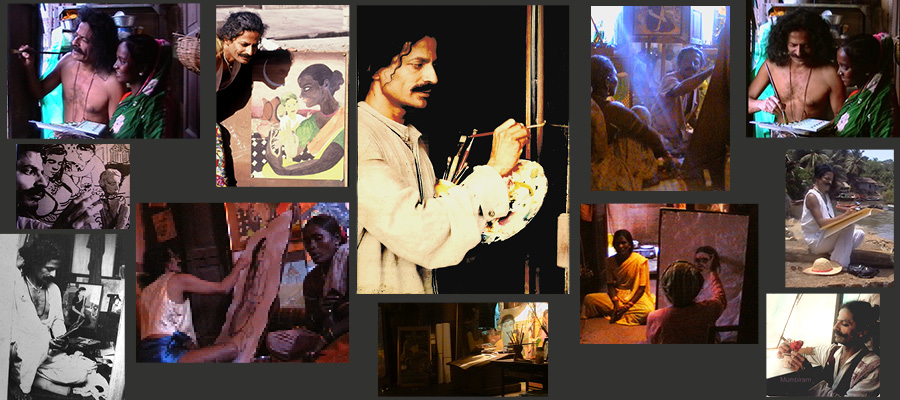
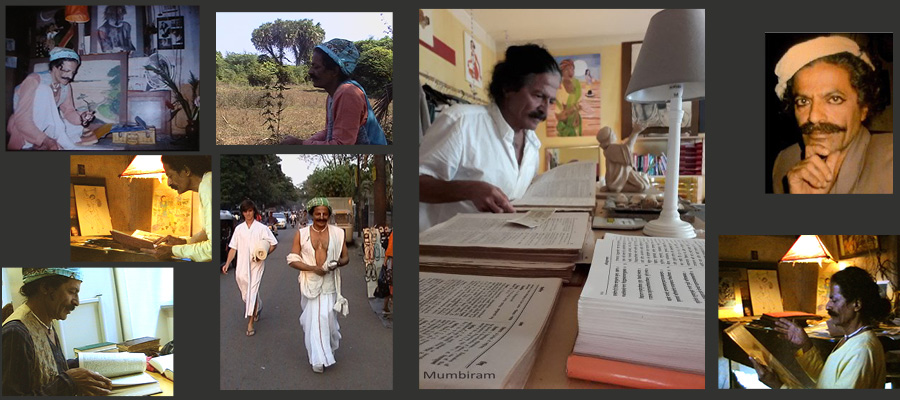
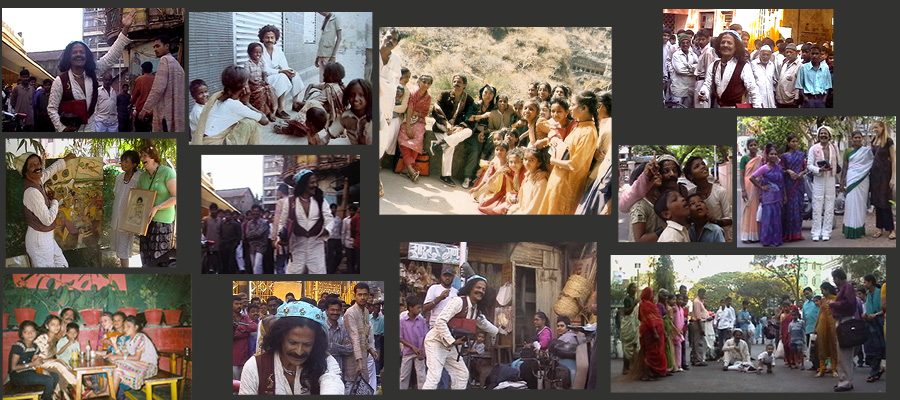

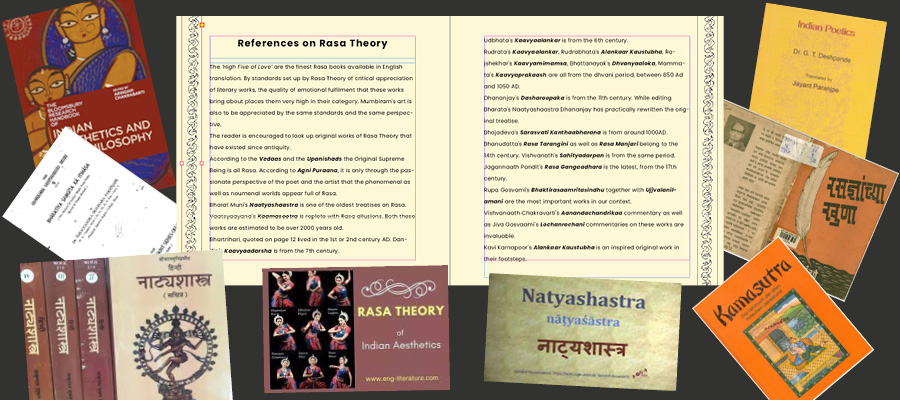
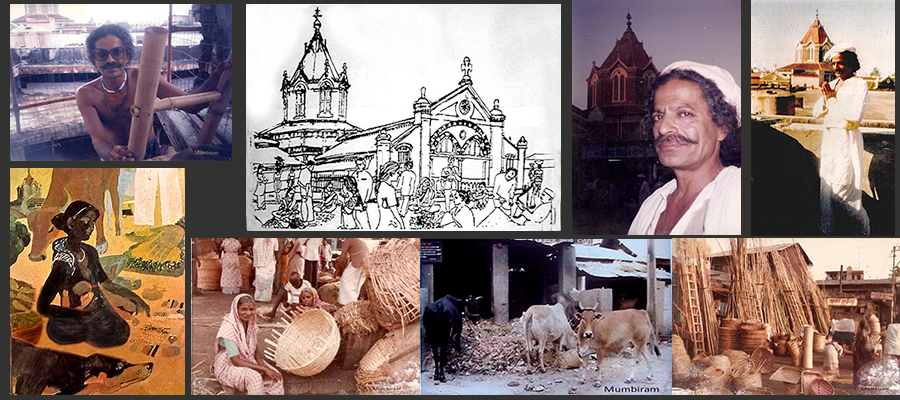
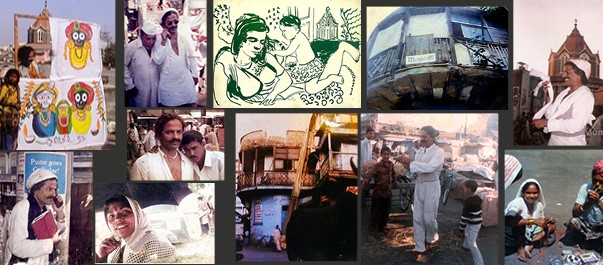
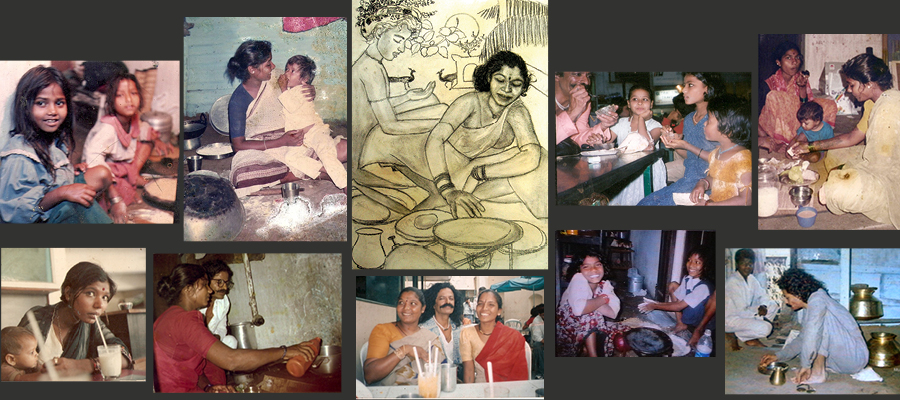
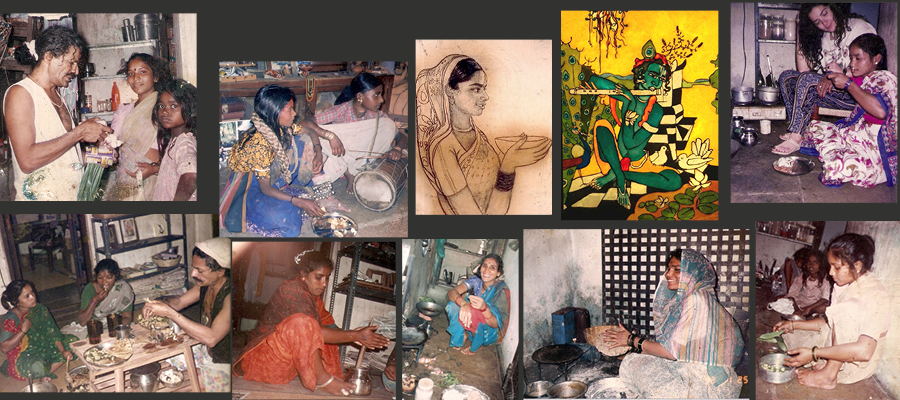
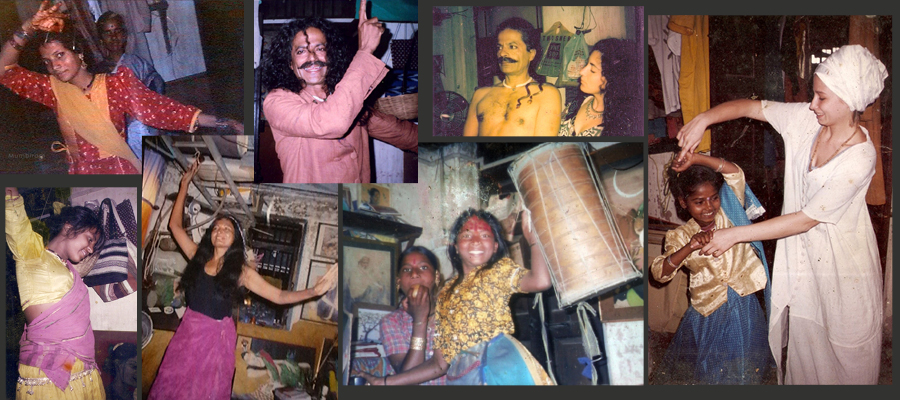
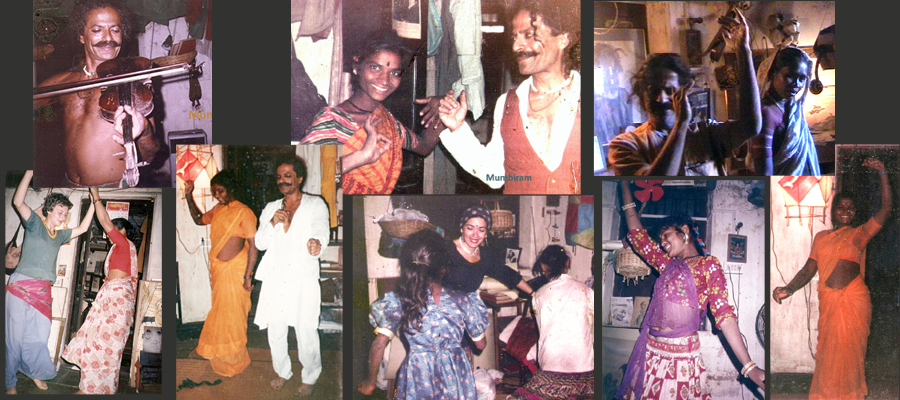
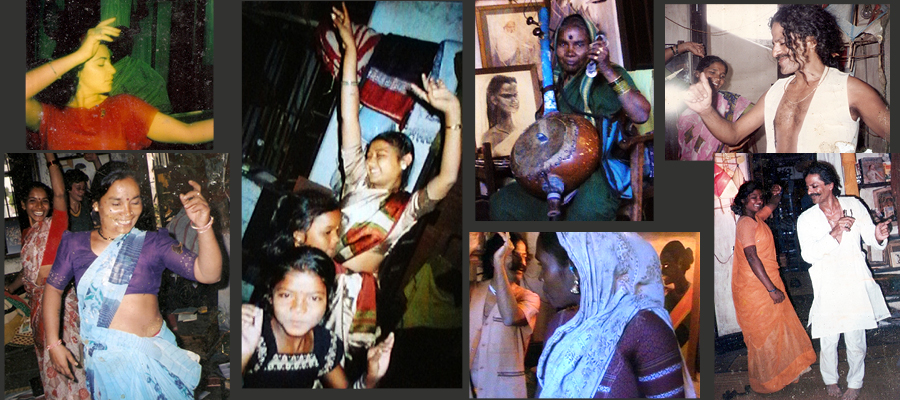
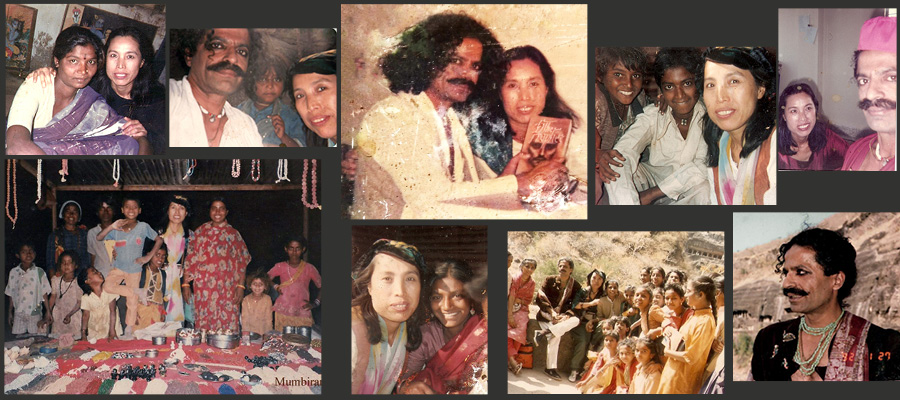

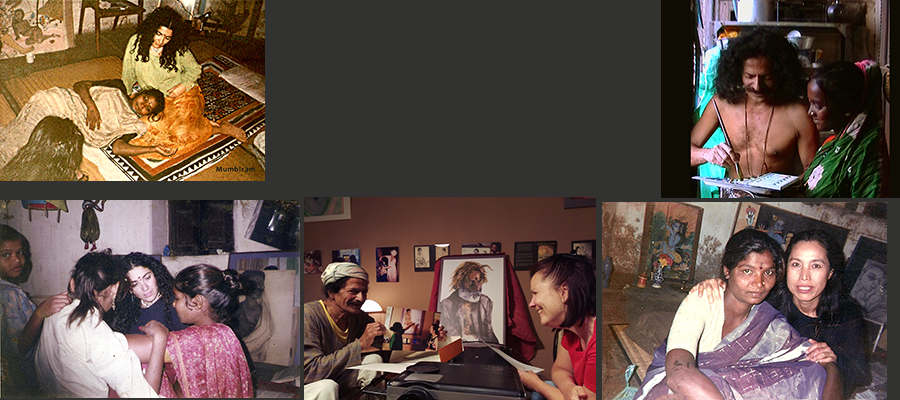
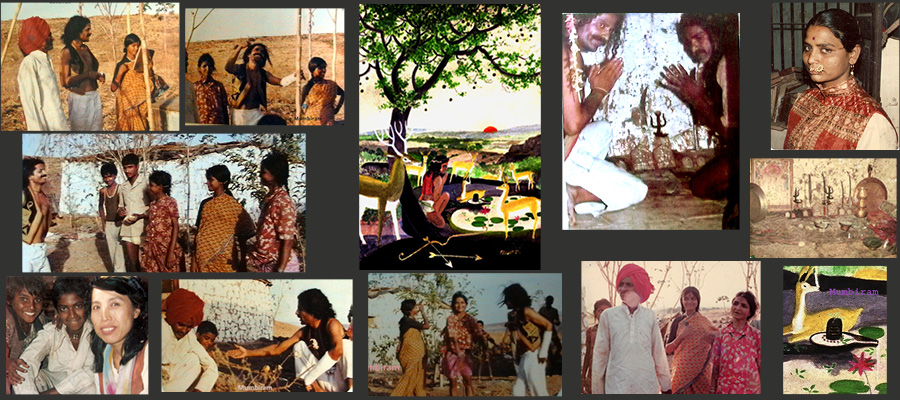
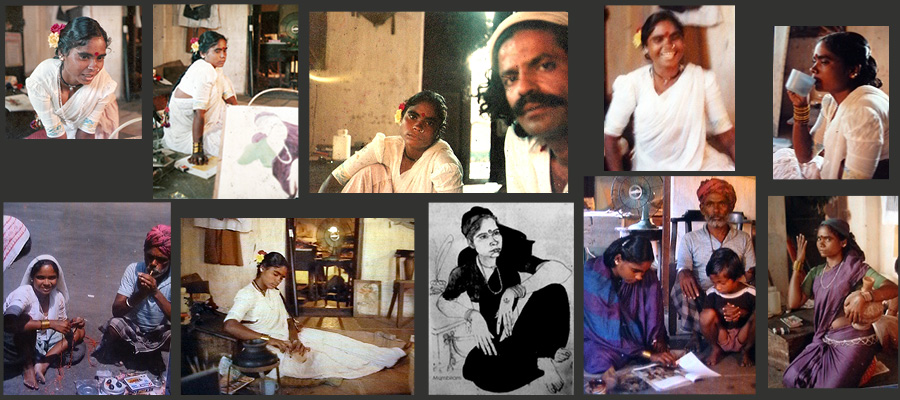
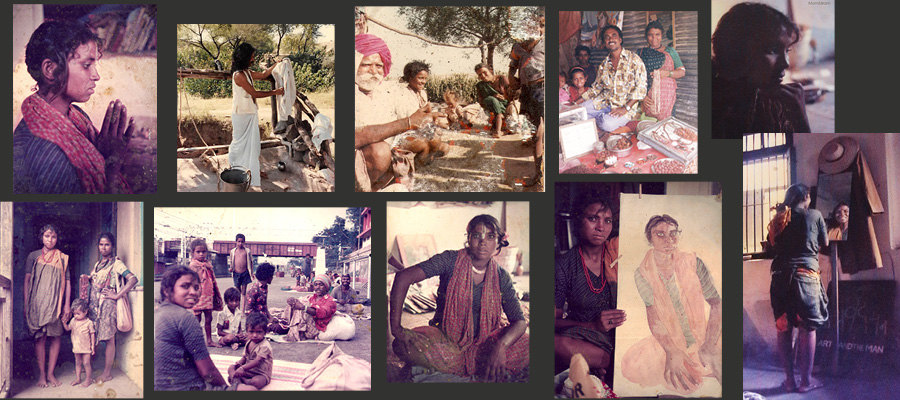
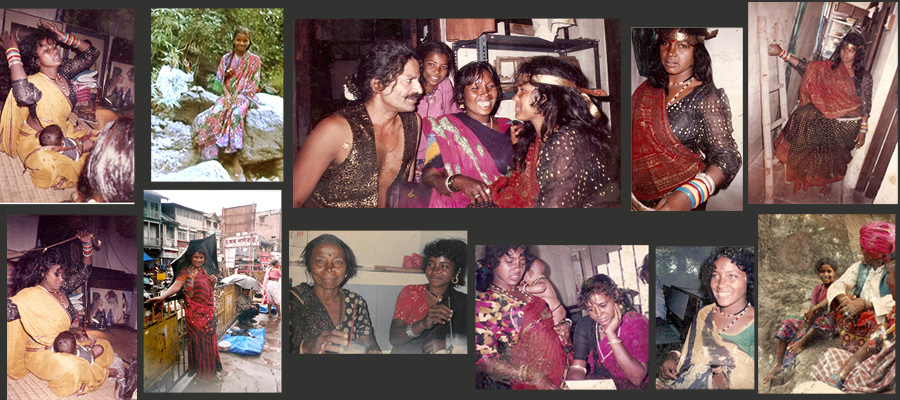
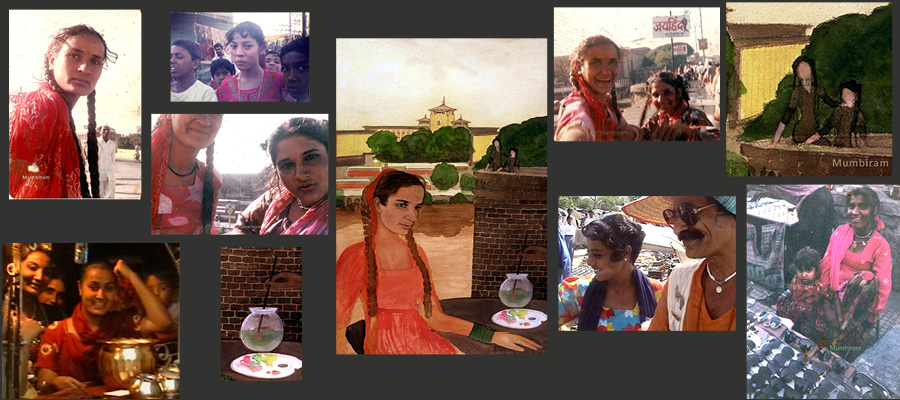
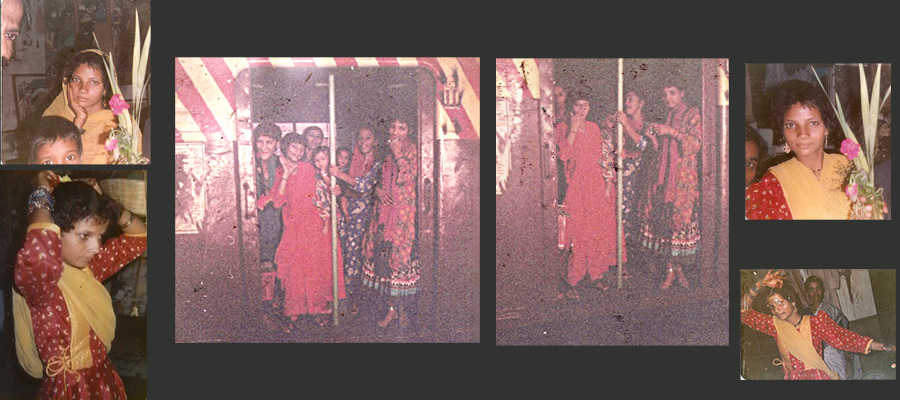

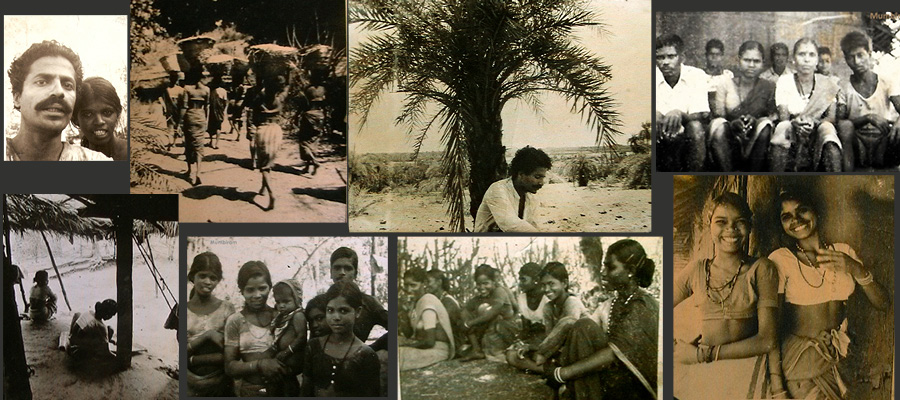
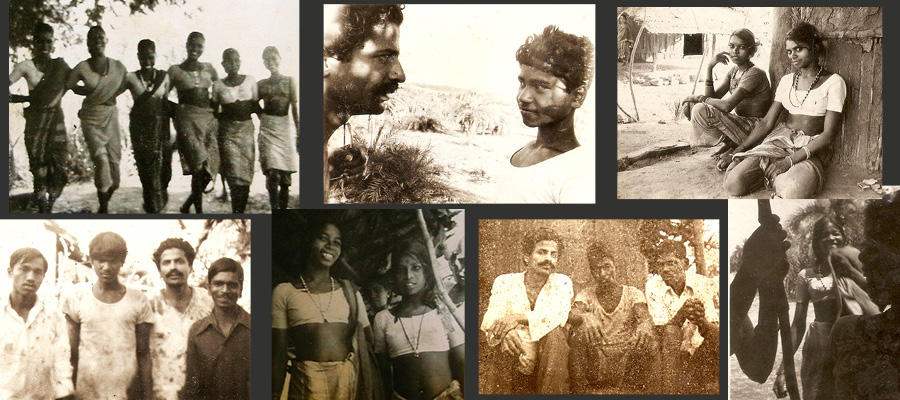

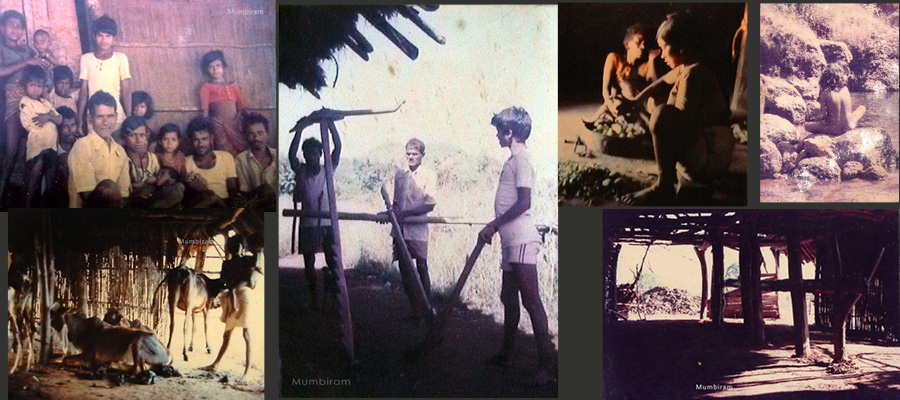
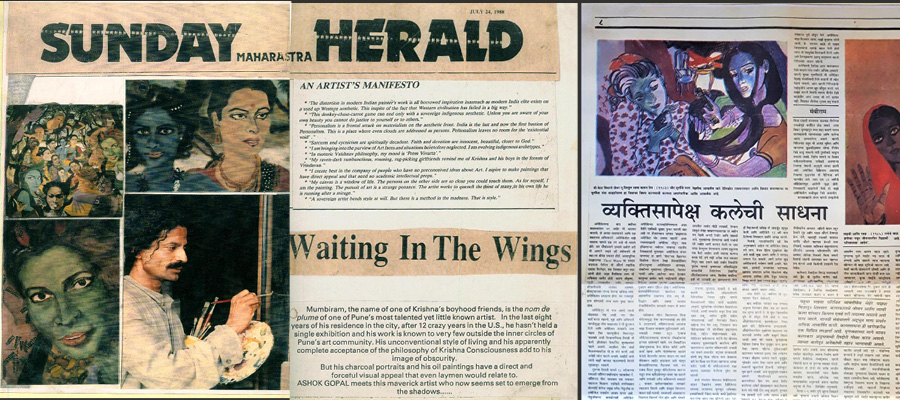
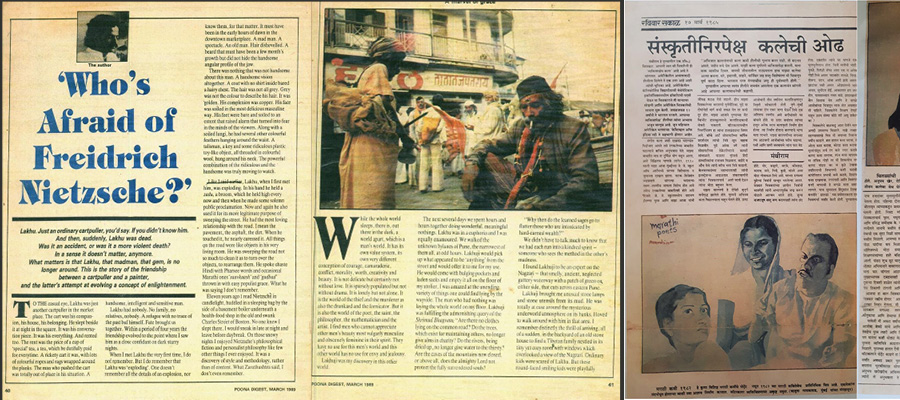
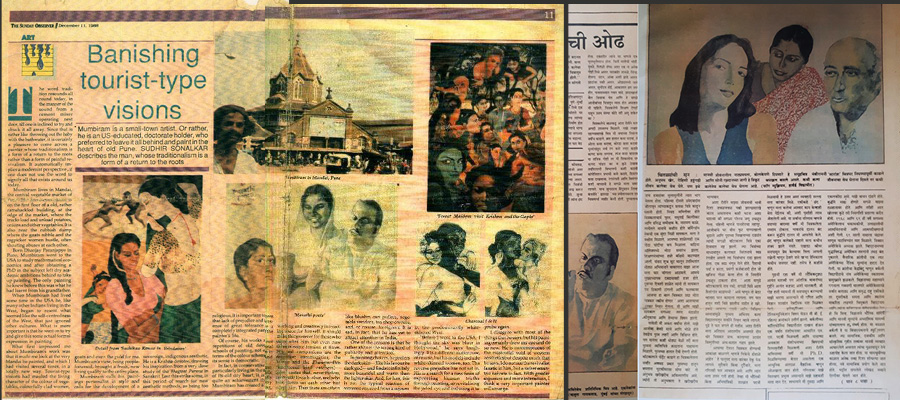
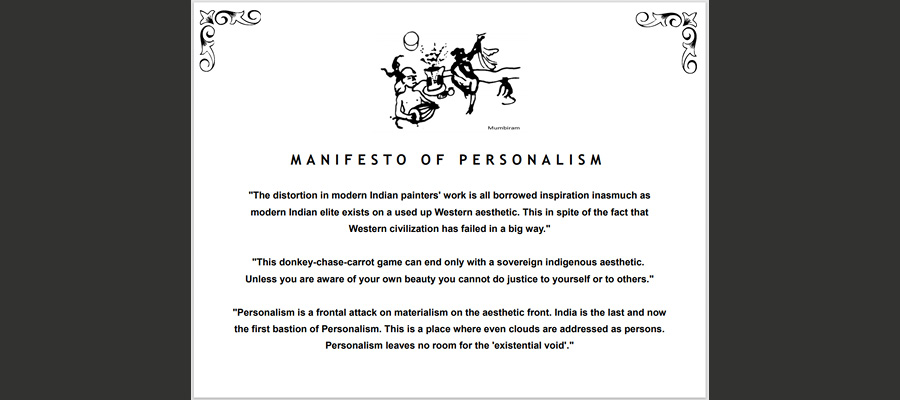
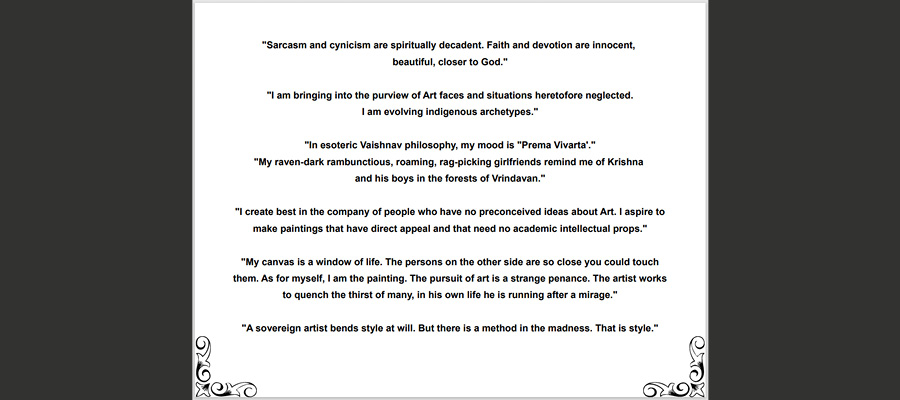
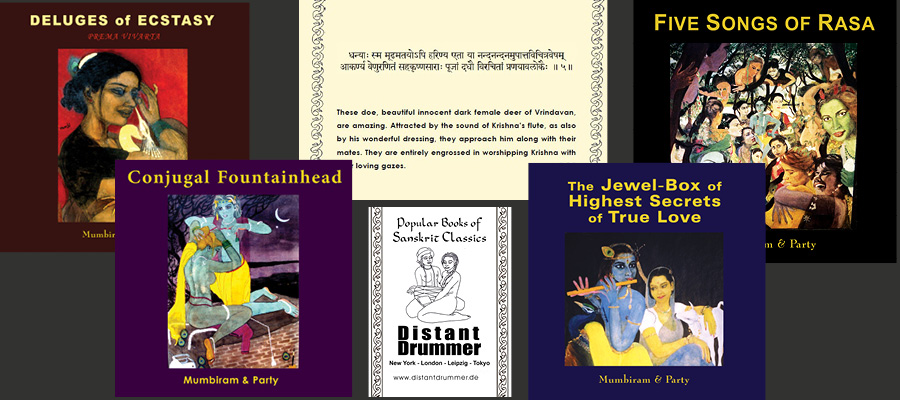
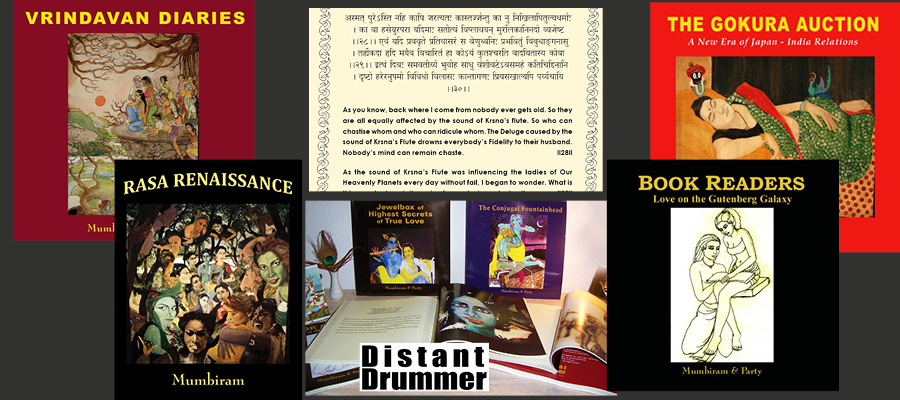
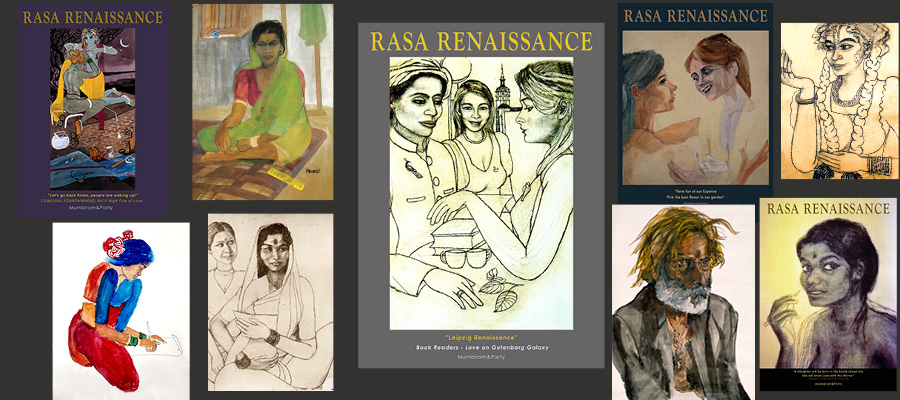
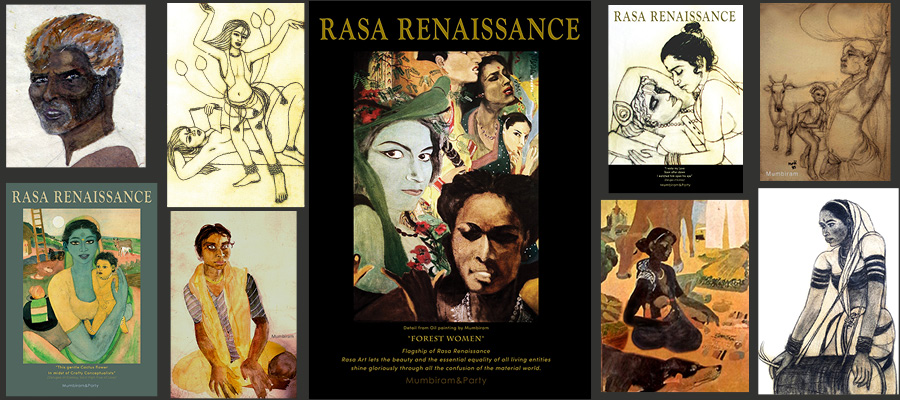
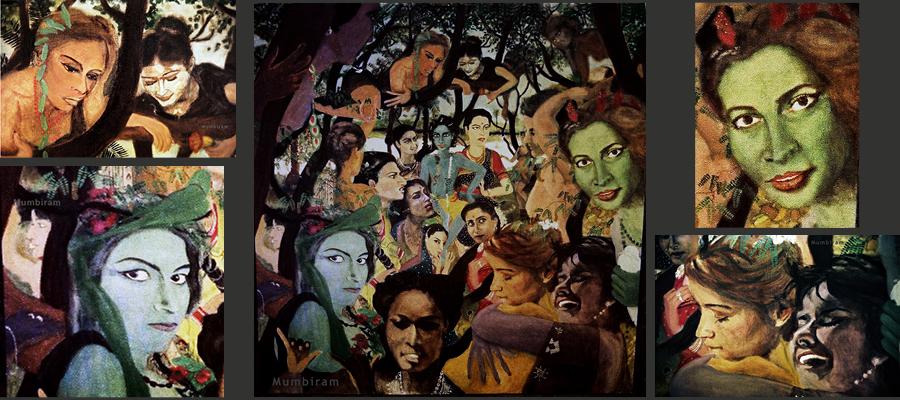

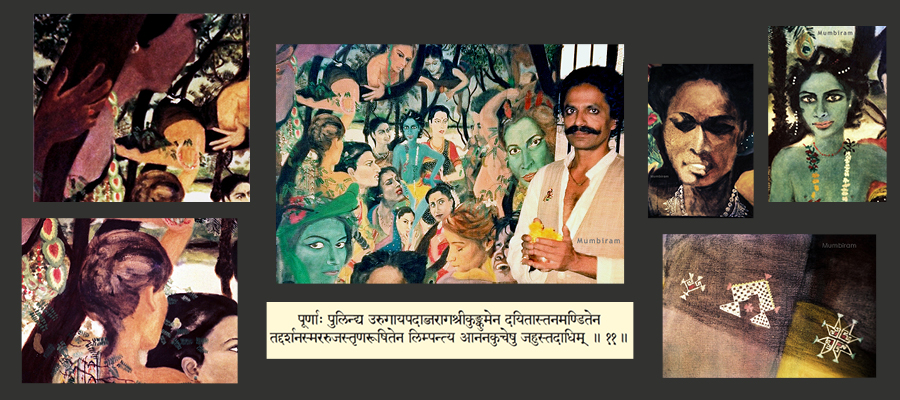
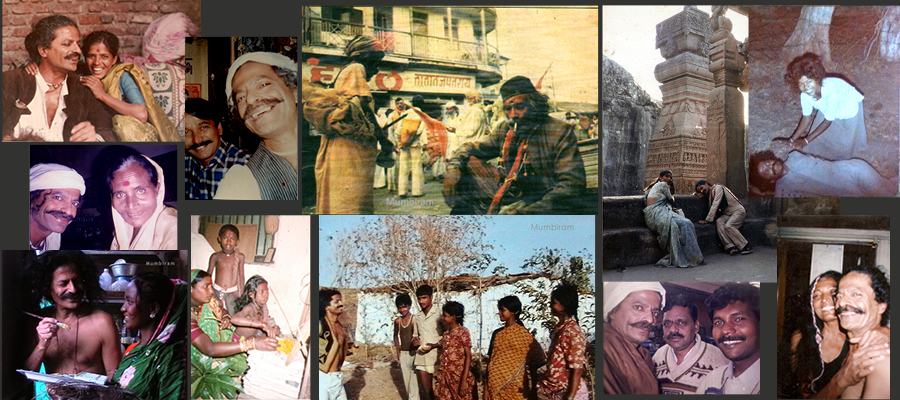

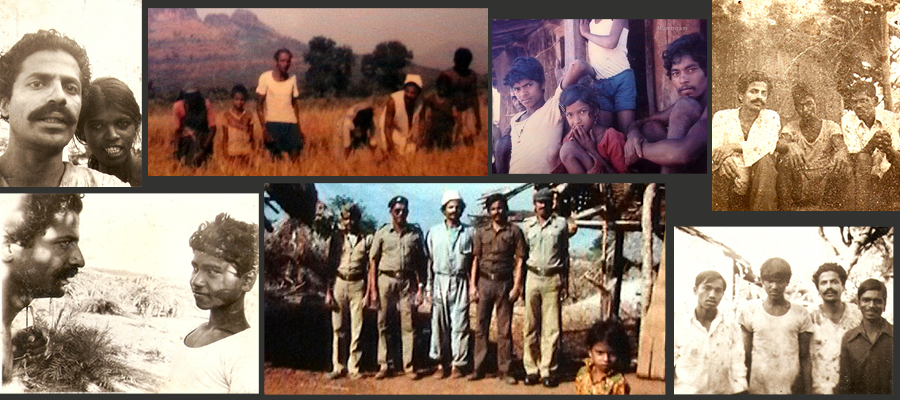
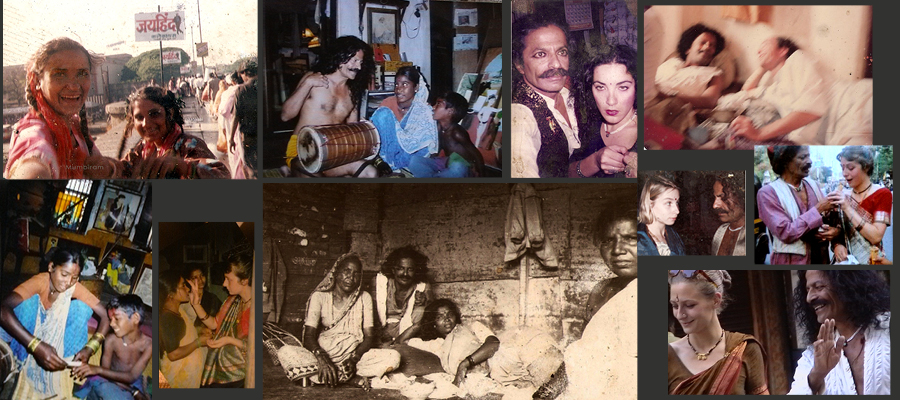

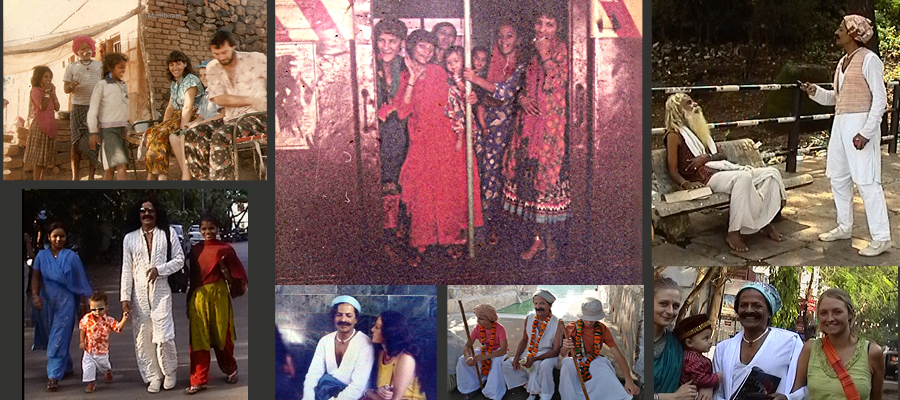
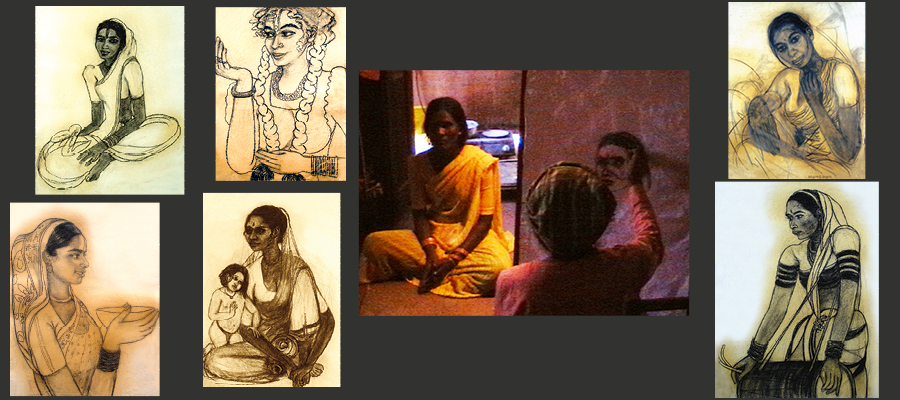
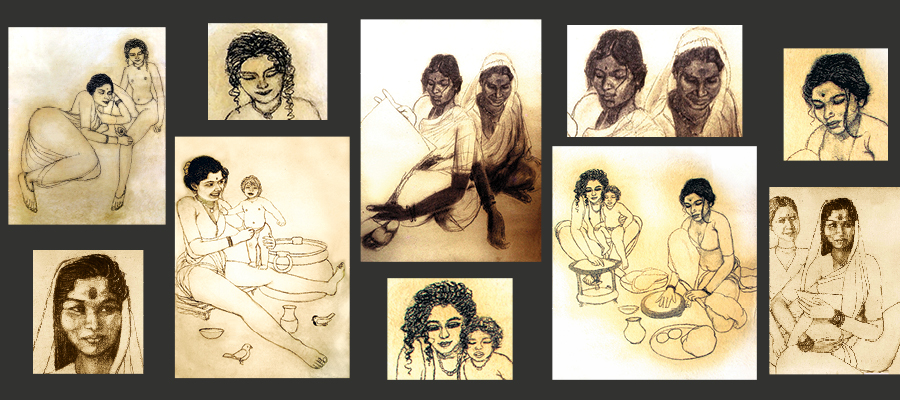
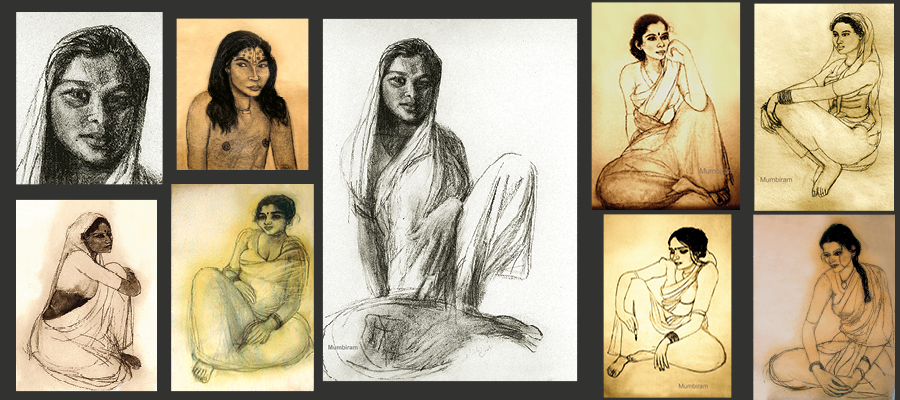
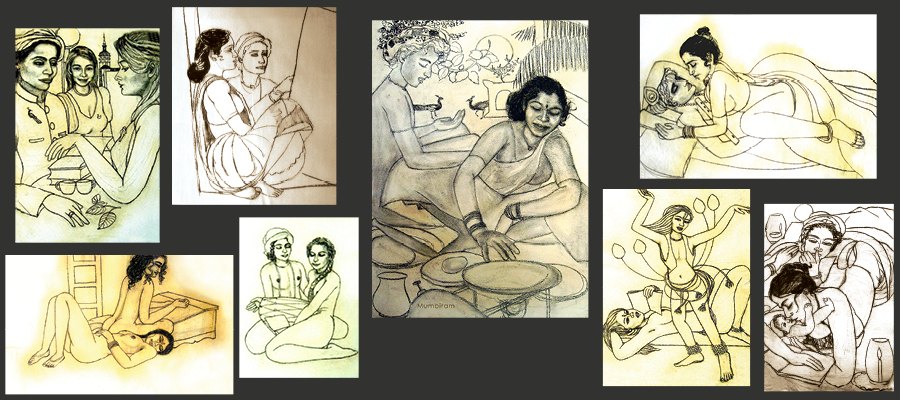
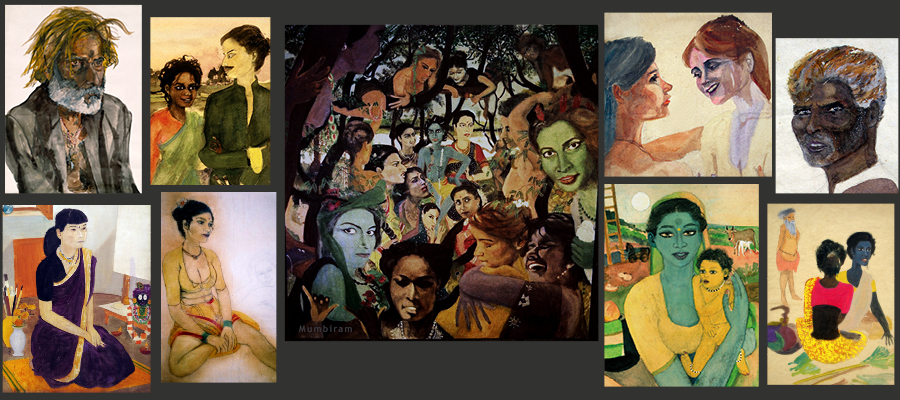
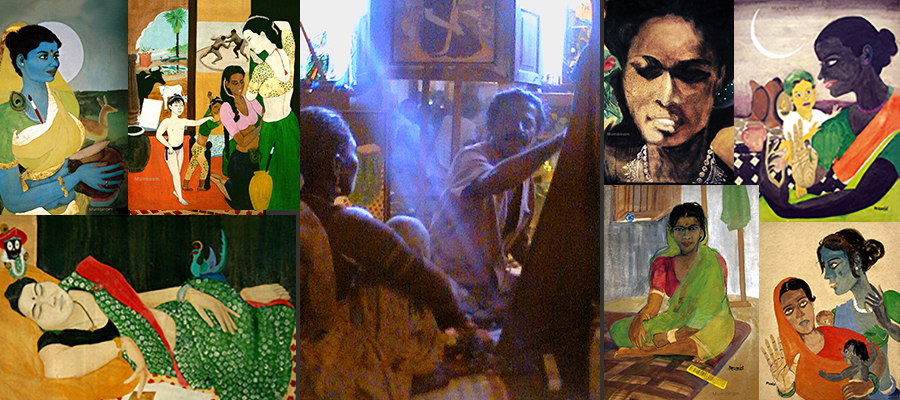

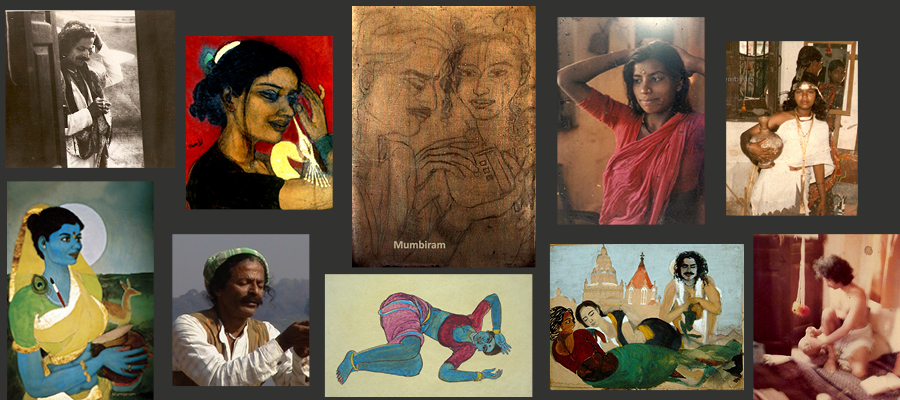
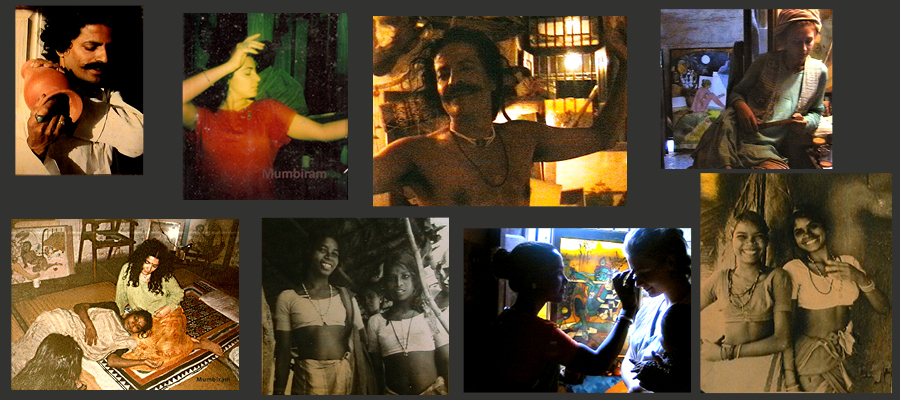
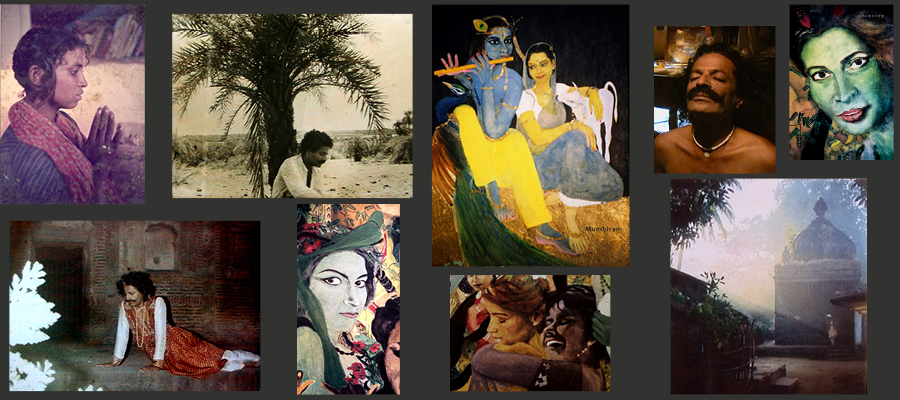
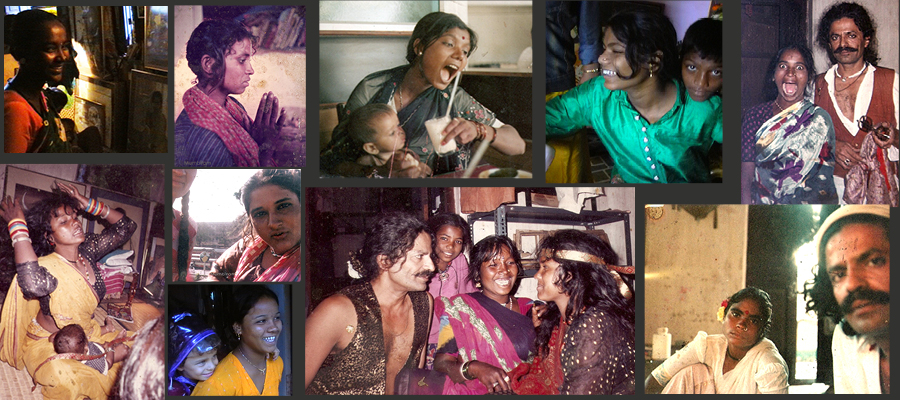
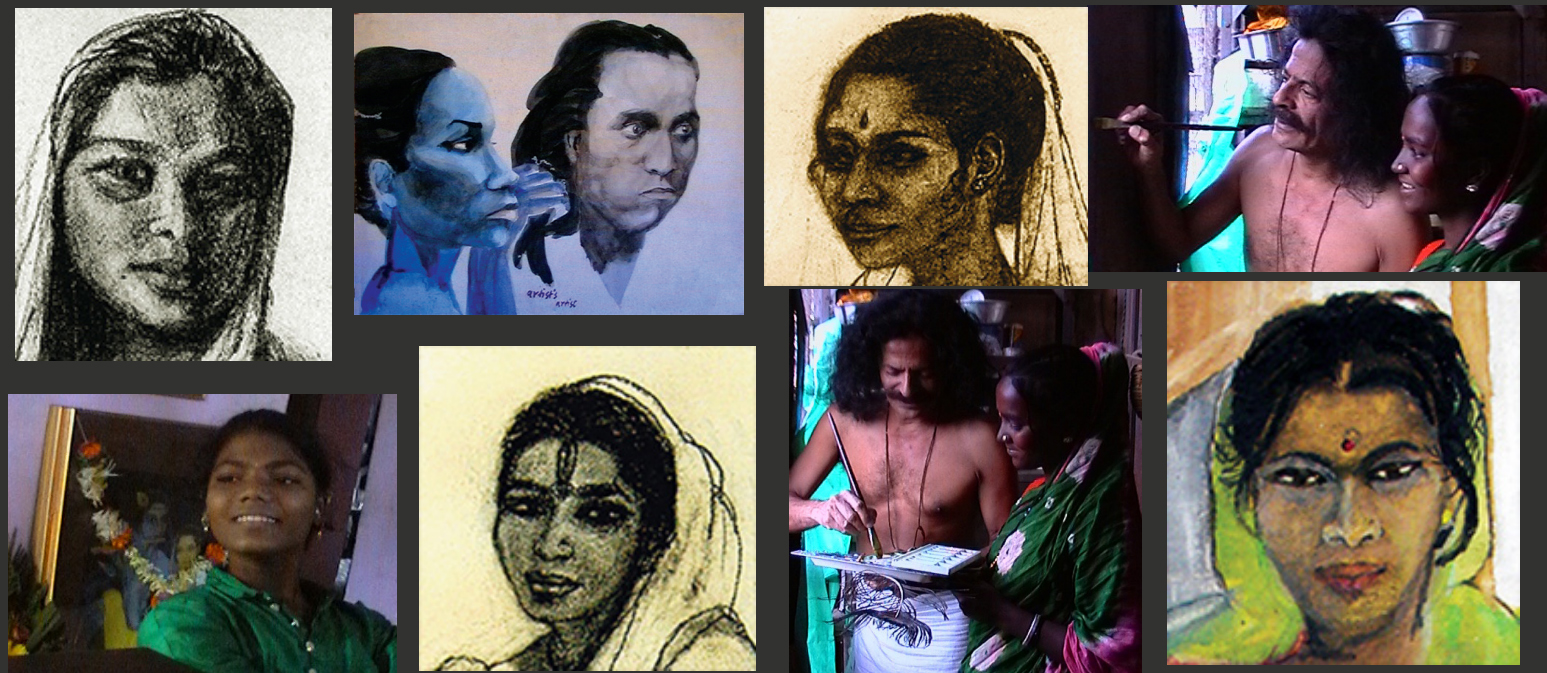
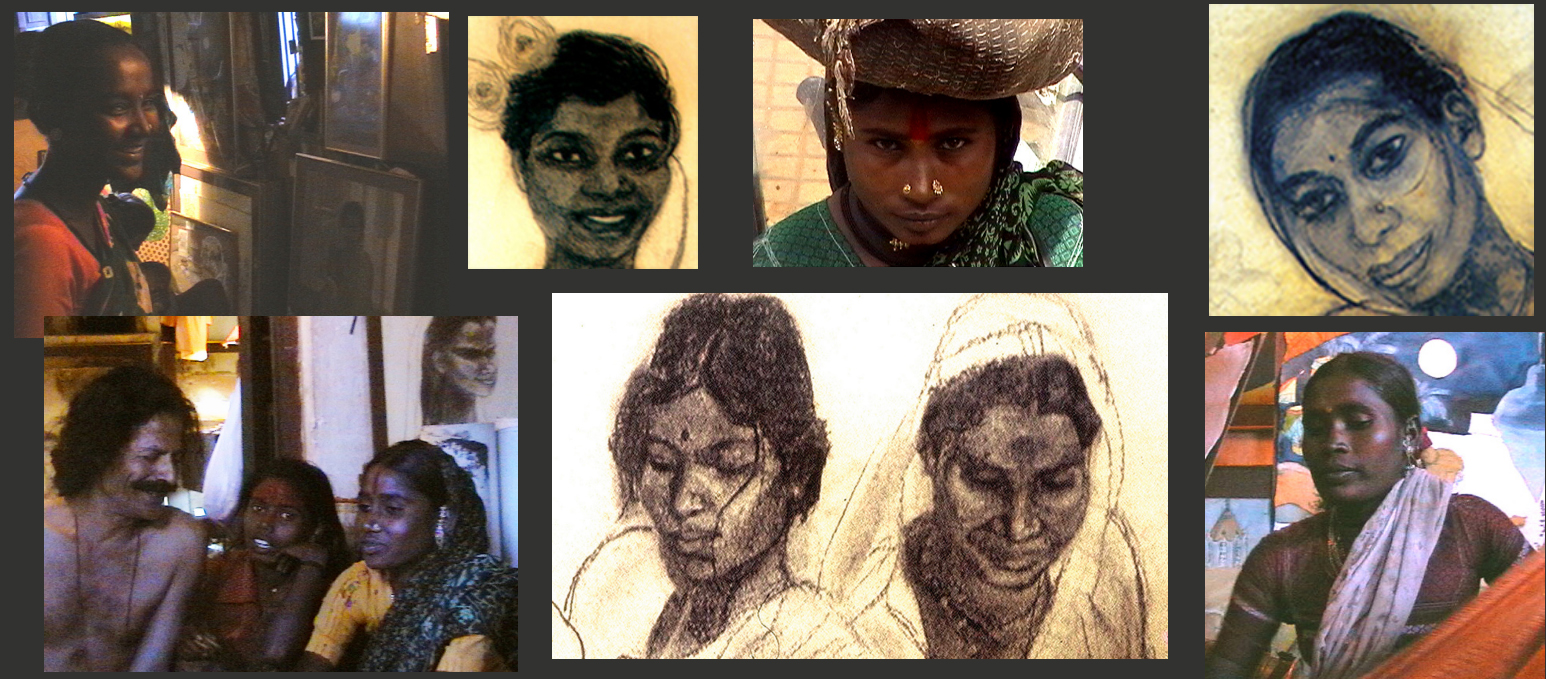
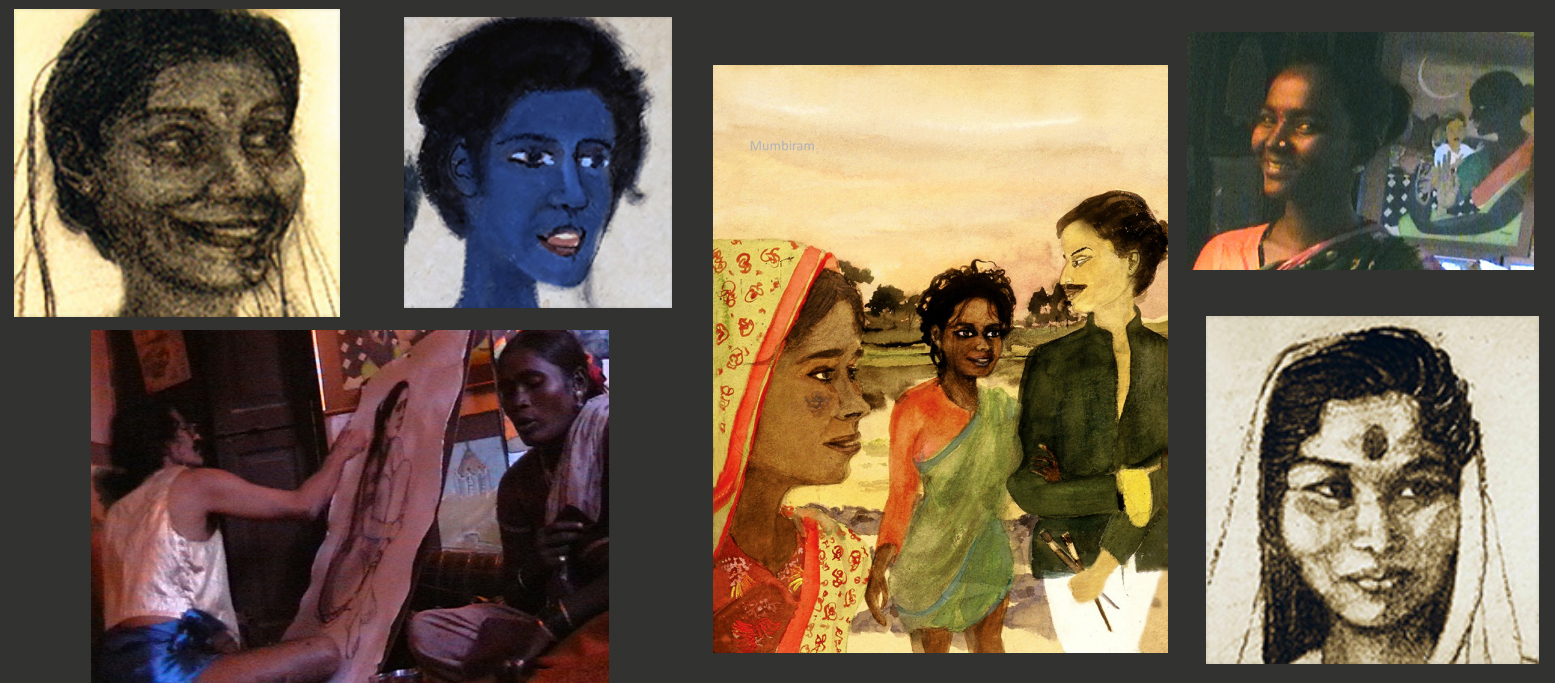

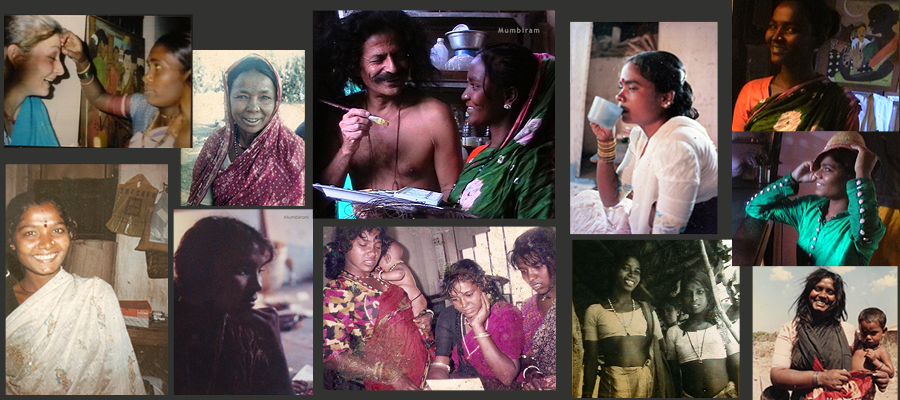
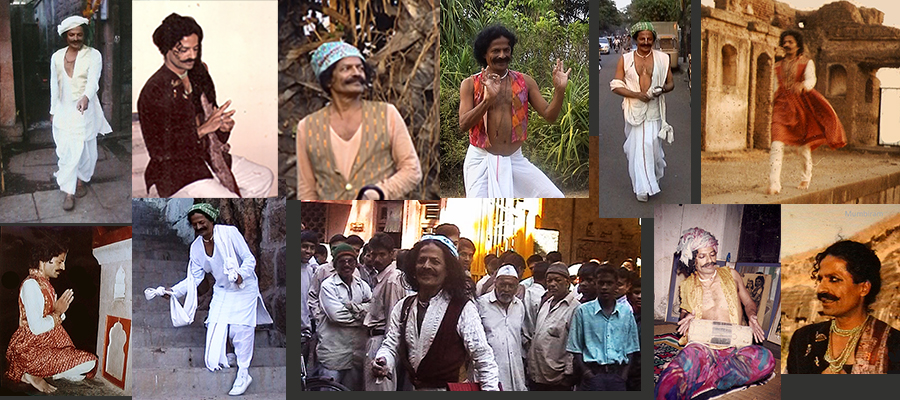
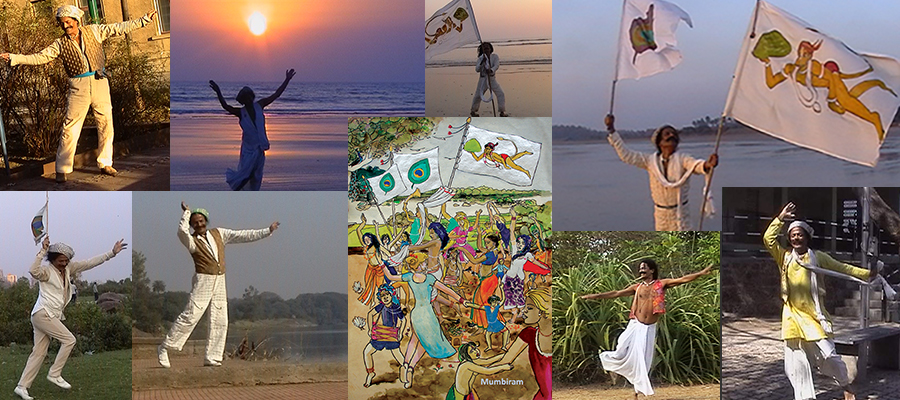
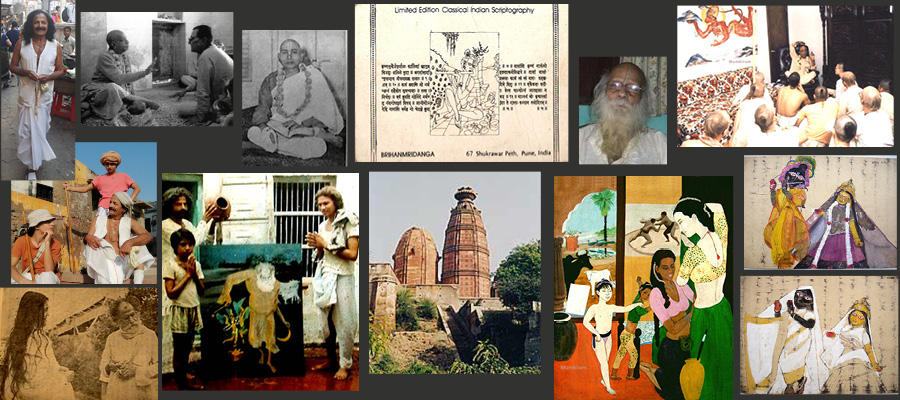
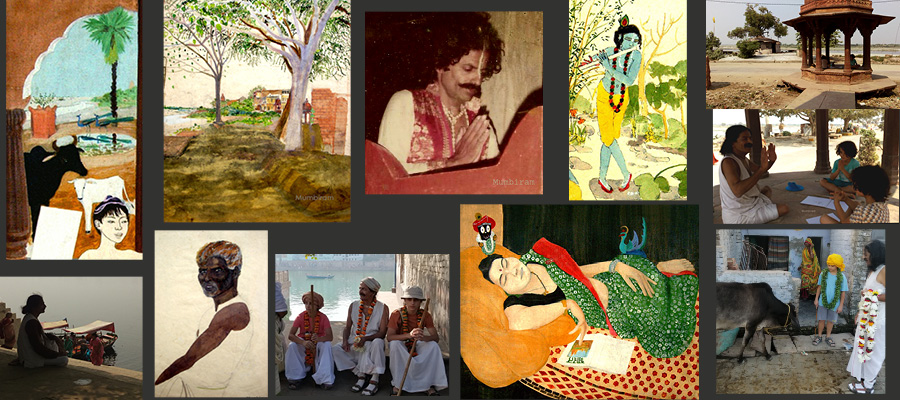
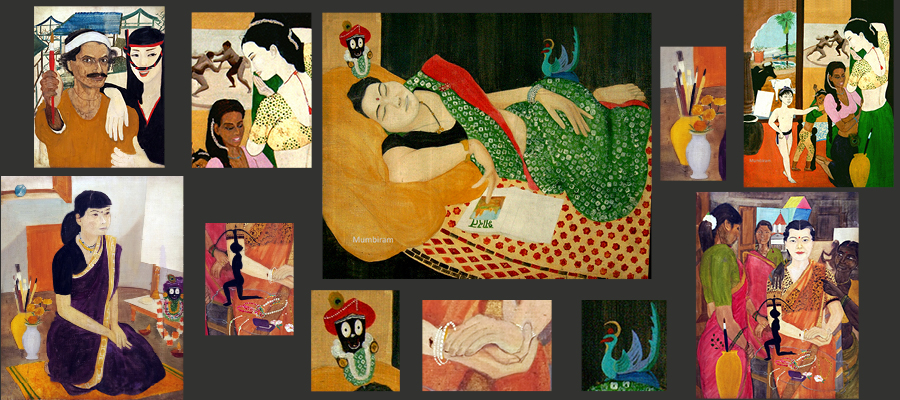
Welcome all Well-wishers
of the emerging Rasa Renaissance Movement
This slide show attempts to take stock
of the emerging Rasa Renaissance Movement conceived
and propagated by Artist Mumbiram
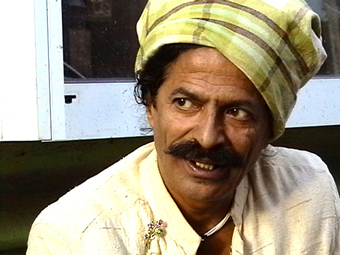
Artist Mumbiram,
Harbinger and Prime Usher of the emerging Rasa Renaissance Movement
This is the story of how Artist Mumbiram has conceived
and propagated the Rasa Renaissance Movement
beginning 50 years ago.
Art of Painting loses Credibility
in the 20th Century
During the course of the 20th century, paintings increasingly manifested
meaningless self-inflicted distortions of reality, banal geometric abstractions
and ridiculous installations. Art lost its credibility. It became prima-facie irrelevant.
The domain of contemporary art of painting was laid barren by chaos,
emptiness and other expressions of Impersonalism and Voidism.
Art defied any theory of aesthetic criticism.
Art lost its vision of the Beauty of Human Existence.
Art expressed cynicism about life.
In these times, the Success and Worth of a Painter was gauged
by spectacular bids in auctions conducted by auction houses
of London and New York.
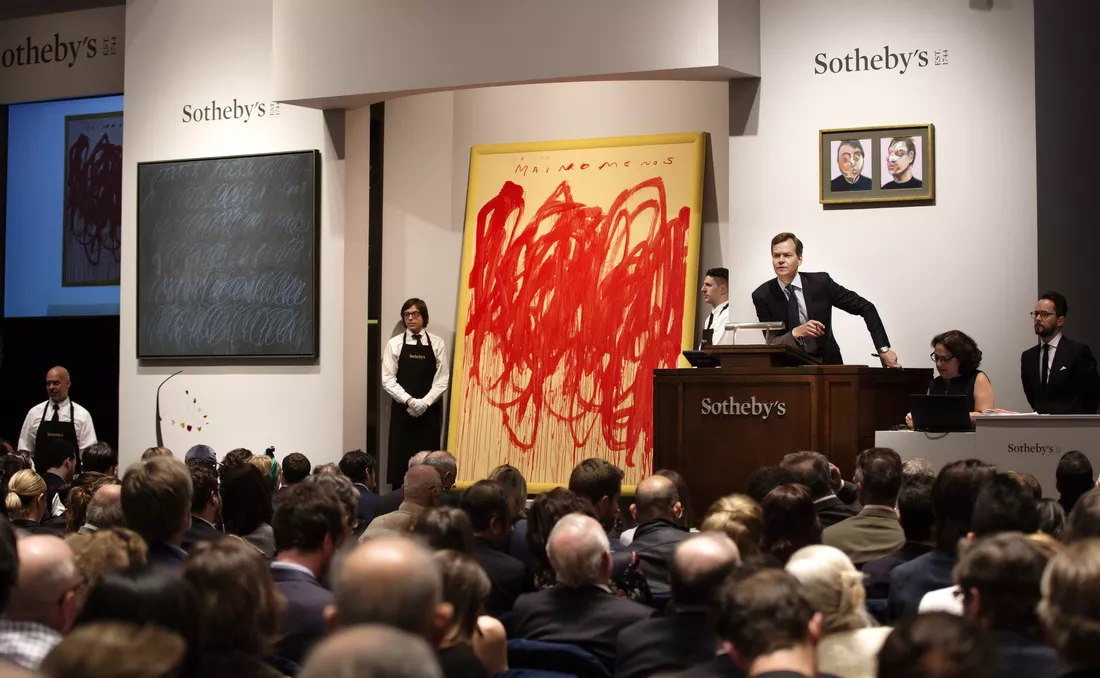


Lay art-lovers as well as art connoisseurs remain skeptical
about the integrity of this process, where hired professional
investors (Hedge Fund Operators !) judge art objects, based on concerns
other than genuine aesthetic criteria. This has turned us all into cynics
about the entire world of contemporary painting.
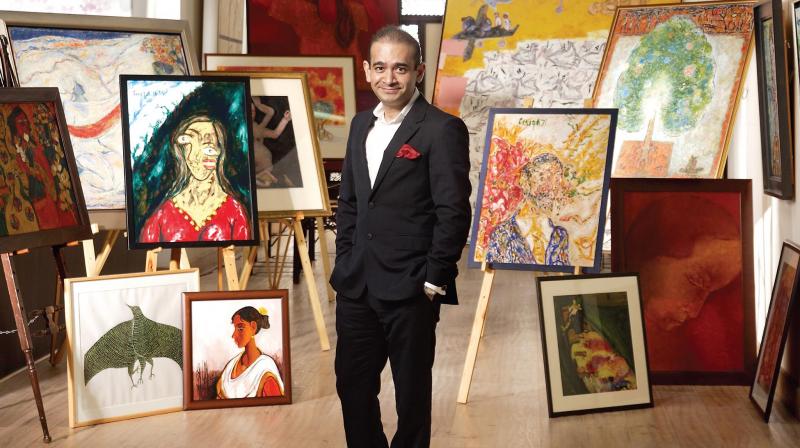
A Painter-Philosopher-Activist who can provide
the art of painting a breakthrough out of this impasse
The world of contemporary painting would have to wait for a painter
who can provide the art of painting a breakthrough out of this impasse.
In the person of Artist Mumbiram, leader of the “Rasa Renaissance” movement,
we have such a painter. He is a virtuoso painter who is also a soulful philosopher
and a social activist.
Mumbiram could perceive that in our times the world of Painting,
like other intellectual, cultural or social areas of human activities,
has only followed the general March of Human Civilization on our Planet
into the dire domain of Impersonalism and Voidism.
Mumbiram could also perceive that the sheer absence
of any universally acceptable theory of aesthetic criticism was at the core
of the dire circumstances. It broke his heart that sincere art lovers
had become skeptical and turned away from art.
He spent hours in libraries studying esoteric Sanskrit literature.
He zeroed in on the Bhagavad Gita and the Shrimad Bhagavatam.
The real hero of these scriptures Shri Krishna is described as Rasaraj.
We are all thirsting for 'rasa'.
He could see that Rasa was the ultimate criterion for any aesthetic choice.
He had identified the one theory of aesthetic criticism that could fill this lacuna.
It was the Classical Rasa Theory of Aesthetic Criticism that has always existed,
especially in the field of Sanskrit literature and music.
It is universal, natural and eternal. It makes arousal and appreciation
of human emotions the central theme of Art and Life itself.
Mumbiram was always drawing and painting.
In America his muses were Native Americans, Afro-Americans and others.
Mumbiram has left some of his precious originals in Seattle, Denver,
Washington DC and Cambridge-Boston.
Here is the glowing tribute that the renowned art-critic of Harvard University,
Stuart Cary Welch, spontaneously wrote after his very first meeting with Mumbiram in 1978:
“Mumbiram handles the brush boldly and freely combining humour
with psychological insight.... Mughal and Rajput portraiture,
at best so profound, insightful, and biting, and – best of all – many experiences of India.
Rooted in Indian traditions, yet aware – without being overcome –
of such Western artists as Matisse, Picasso and Steinberg,
Mumbiram deserves a high position among contemporary Indian painters.”
On hindsight we see how acutely perceptive and absolutely confident
Cary Welch was about his judgment about this artist and his art.
Legendary Atelier in Pune’s Mandai Market
(1980-2005)
When Mumbiram returned to his Beloved India at the end of 1979
after 12 years in America, the rented house in downtown Mandai
market in Pune, where Mumbiram was born, lay empty and deserted.
Mumbiram made his studio in that dilapidated house with a leaky roof.
In that place the next chapter of the Mumbiram saga unfolded with great élan.
Soon Mumbiram's atelier saw a steady stream of the folk people of the
downtrodden lowest castes and tribes on the one hand and admirers from
far corners of the world on the other. Some saw it as the Pygmalion story.
The lumpen, ponderous creatures who are ignored or pitied on the street appear in
Mumbiram's renderings as proud elegant muses of high art. They were destined to
adorn walls of well-endowed lovely homes. Some saw it as the Robin Hood story
where the artist took from the "haves" and gave it to the "have-nots".
It was legendary; a storyline fit for great novels and feature films.
One gets a glimpse of that in the short documentary,
Labyrinth of a Renaissance made by Nadine Grenz.
Attraction to the nomadic,
forest dwelling tribals and exotic ethnic minorities
Mumbiram was attracted by the nomadic lifestyle
of the Phasepardhi birdcatchers from early on.
He was a frequent visitor to the ethnic Belutchies that camped out
in canvas tents outside the Shivajinagar railway station.
Mumbiram used to visit Warli Adivasi Tribals near Dahanu.
Thakur tribals inhabiting the hilltops of Raigad District.
Mumbiram has written heart-warming accounts of the gentle
and sensitive emotional dealings of these tribal communities.
Mumbiram sees them living idyllic lifestyles close to the pastoral lifestyles
of inhabitants of Vraja when Krishna appeared amongst them.
Literary Skills in the service of the
nascent Rasa Renaissance
The Artist puts his Literary Skills in the service
of the nascent Rasa Renaissance Movement
Mumbiram went public through his writings in newspapers in his confrontation with Impersonalism and Voidism.
His brilliant autobiographical writing in Sunday supplements of Marathi and English daily newspapers
was not only acclaimed by experts but also heartily appreciated by laymen.
It showed how Rasa Art gracefully intertwines the artist's life and his art.
It shows how Rasa Art opens up avenues of creativity
that are enlivening and enlightening for the artist, his muses and his admirers.
His “Manifesto of Personalism” appeared in Sunday Herald in 1987.
Inspiring young Germans to publish
Rasa Literature and Rasa Art
Creating “Distant Drummer Publishing Company”
His fine translations of his favorite Rasa Classics from Sanskrit to English
were a wonderful medium to ensconce his equally graceful Rasa Art.
A group of young Germans made a publishing company “Distant Drummer”
to publish these books online. They are also making available at
affordable prices Posters of Rasa Renaissance and fine canvas prints
of Mumbiram's Rasa Masterpieces.
“Pulindya Forest Women Visit Krishna and the Gopis” (1985, Pune)
His iconic painting “Pulindya Forest Women Visit Krishna and the Gopis” (1985, Pune)
came to be recognized as the Flagship of Rasa Art.
After changing hands a few times the painting is now acquired by an official of the Mercedes Benz Company
and presently located in Stuttgart Germany. It is based on a verse from the Shrimad Bhagavatam
and emphasizes how dear the tribal dwellers of the wilderness were to Krishna.
The first two versions of this painting were made by Mumbiram in the 1970s in Seattle
and are now in unknown hands in the USA. The history of the making of this painting and of how
it traveled the continents is the subject of an entire book.
Bringing Rasa into the Art of Contemporary Painting
Mumbiram's “Rasa Renaissance” is conceived as a Popular Art Movement.
The so-called Modern Art of the 20th century seemed to exist for the academic and the investor.
The lay viewer was considered too unintelligent to 'understand' the esoteric
profundity (sheer lack of any Rasa !) in the Modern Artwork.
Mumbiram is bringing Rasa into the art of contemporary painting.
Rasa Art is created through a soulful interaction between the Artist,
the Muses as also the Admirers/Art Lovers.
And the outcome is timeless masterpieces in
Austere Charcoal medium that is Mumbiram's favourite
for its noble simplicity
And the outcome is also timeless masterpieces in the classic oil painting medium favourite
of great masters in history and which Mumbiram has mastered
in his very own unique way
All exciting details about the Practice and Aesthetics of Rasa Art,
as also the Rasa Appreciation of Mumbiram's Creations
is shared on Mumbiram's website www.mumbiram.com
Unleashing the mighty potential of Art
Use of online facilities has enabled Mumbiram to stay away from Art Agents,
Galleries and Auction Houses, yet remain accessible for his admirers.
Rasa Renaissance hopes to free Art of Painting from the tyranny of Big MoneyBags !
In the “Age of Rasa Renaissance” everybody can be an art-patron
and an art-collector.
Mumbiram is unleashing the mighty potential of Art by freeing it from Impersonalism and Voidism:
“Art should redden the west as much as the east.
Art should bridge the gap between man and woman.
Art is to bridge the gap between
the space age and the bow-and- arrow age.
Art should be the great antidote for the maladies of the Material World.
Art should render economic disparity toothless.
Art should give wings to man."
Challenging oppressive Stereotyped Ideas of Human Beauty
Ideas about human beauty do get stereotyped. These often have racial, ethnic as well as caste overtones.
They also get aligned with social and class distinctions. Mumbiram felt all stereotyped ideas
of human beauty are oppressive. Mumbiram found easy camaraderie
with people from all walks of life. What attracted him to people
was how they behaved in real-life situations. His ideas of human beauty
were related to their behavior rather than their physical features.
Mumbiram is challenging oppressive Stereotyped Ideas of Human Beauty.
Mumbiram is bringing justice to the exquisite dark beauties of our planet.
Mumbiram is changing our perception of different tribes
that inhabit India's remote hills and forests.
Mumbiram is leading the way in such bold innovative ideas in contemporary aesthetic experiences.
Mumbiram perceived beauty in diverse human situations.
This new aesthetic is precisely what we need in a world where different human types
are coming face to face with each other like never before.
In a country with culturally rich and ethnically diverse population as in India,
an artist like Mumbiram is the gift from above that India (and by extension our planet)
so direly need and deserve.
A very creative lifestyle of a Rasik Artist
Mumbiram is showing by personal example a very creative lifestyle
which manifests as amazing joyous experiences in designing and modeling clothes,
dancing to music on water-fronts, making dramas, cooking together,
making journeys to Ajantha-Ellora etc etc.
We here give a glimpse of his innovative ideas in dressing himself and dancing.
Mumbiram's Passion about the land of Vraja Vrindavan
Mumbiram's advancement in spiritual life and his precious discoveries in the
Rasa Theory of Aesthetic Criticism have been intimately intertwined.
Both have a deja-vue quality and are ultimately focused on the amazing extraordinary
personality of Rasaraj Krishna. Mumbiram has been visiting Krishna's beloved land
of Vraja Vrindavan ever since his first visit in 1987. In that first visit Mumbiram had met
Gokula from Japan who had similar passions about aesthetic and spirituality.
Separate books have been written about Mumbiram's visit to Japan
that followed in 1988. Here we share some glimpses of that encounter.
One Man's Courageous Stand that striked the Spark
that would trigger the “Rasa Renaissance”
When it seemed as if the Art of Painting had succumbed to the stormy winds of
Impersonalism and Voidism that prevailed in the intelligentsia of Twentieth Century,
it has taken one man’s courage to stand up to that onslaught and enter the Twenty-first Century
with the blazing colours of Rasa Art and the solid universal classical foundation
of the Rasa Theory of Aesthetic Criticism.
Mumbiram reminded us of the timeless Rasa Theory, the Doctrine of Pleasure from Rasas
or emotions aroused in the minds of the Artist, his Muses
and the Lovers of his Art.
Far away from the haloed portals of academia, auction houses and galleries,
transcending the din of the market place (lit.), Mumbiram showed us art
reawakening to the Rasa Realm of personal emotions.
Mumbiram spared himself no hardships in that noble endeavor.
The Spark that Mumbiram has lighted as the Rasa Renaissance Movement
is destined to blossom into the full “Age of Rasa Renaissance”.
Shift of the Center of Gravity of the World
of Painting in India's Favour
In our times, the "Center of Gravity" of contemporary art was firmly anchored in the "West".
Auction prices had become the measure of artistic worth.
Mumbiram's insistence on judging art based on the Rasa Theory has shifted the
"Center of Gravity" of the art of painting in India's favour.
“Rasa Appreciation” (Rasa Grahan) of works of Art is more and more accepted
as the gracious mode of enjoying a work of Art.
In the “Age of Rasa Renaissance” India will no longer be experiencing the
'Donkey-chase-Carrot' of contemporary Modern Art where India has to struggle
to catch up with outrageous arbitrary standards originating in the West.
On the contrary, sincere Art Lovers in the West will be relieved
to enjoy Rasa Art originating from all corners of our Planet.